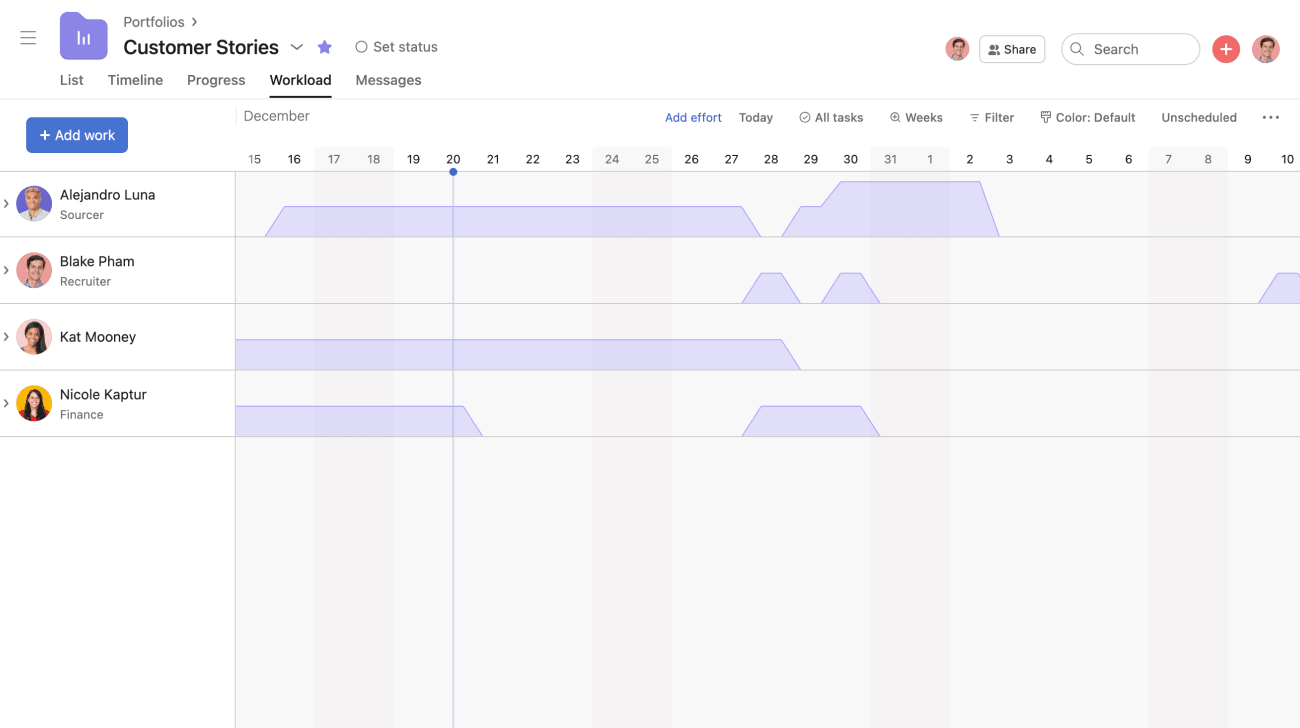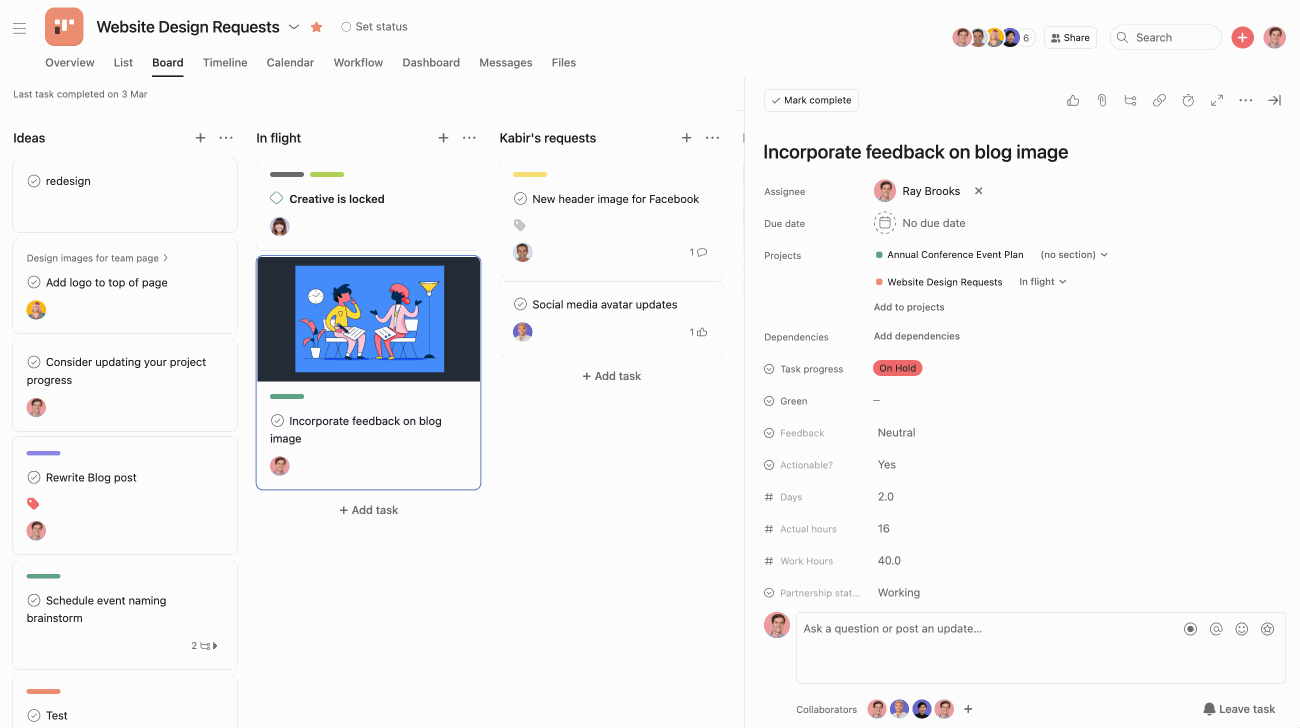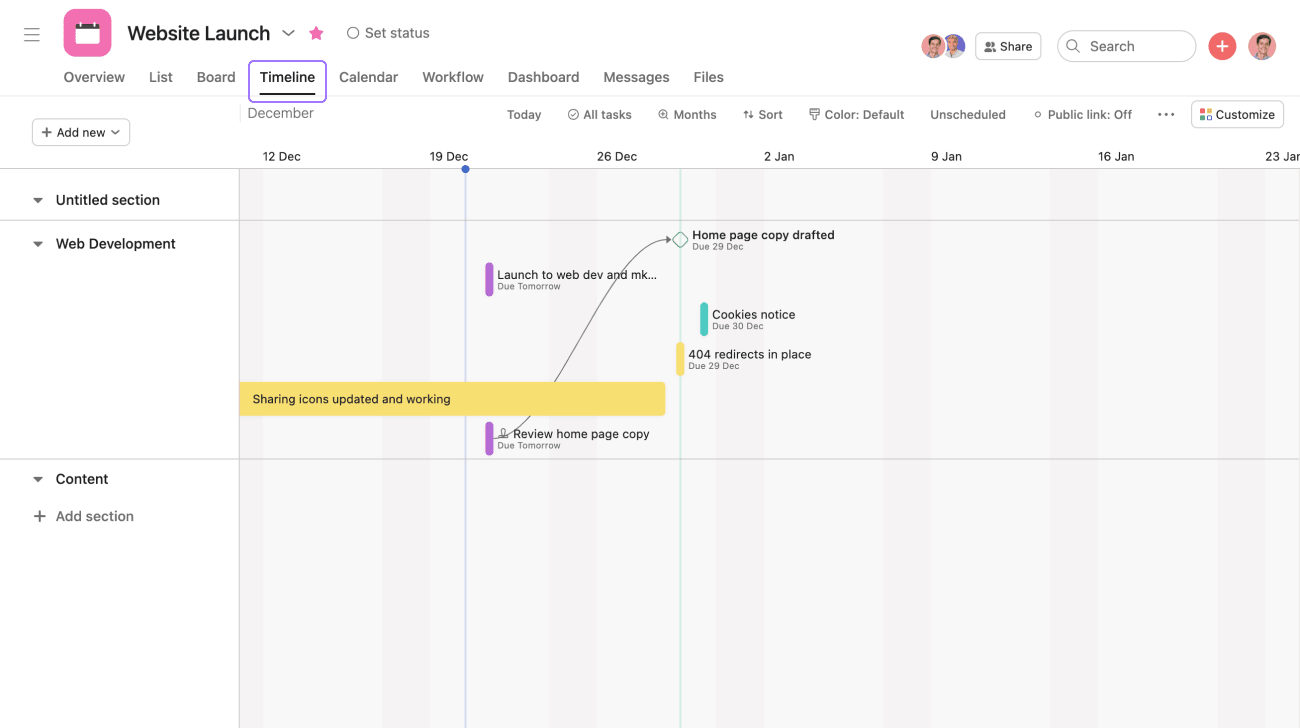Make the most of your Asana trial
Modified on Thu, 4 Jul, 2024 at 1:58 PM
Get started with workload with our step-by-step tutorial. Whether you’re brand new to Asana or have been using the free version for a while now, a trial is the best way to explore all that Asana Starter and Advanced have to offer. Features available on these tiers can help you manage projects and ensure that anything from the smallest to-dos to the biggest initiatives stay on track. This article will help you understand the power of Starter and Advanced features available to you during your trial and how to get started with them.
If you haven’t started a trial yet, you can sign up for a free trial here.
Visit the Asana Academy for 5 tips to help you get the most out of your trial.
What you should know before starting your trial
Asana is one of the leading collaborative work management tools, built for better productivity, collaboration, and coordination across teams and organizations. Instead of trying to wrangle everything via email, files, endless meetings, and chat, you can plan, manage, and monitor all your work in one place with Asana. Plus it integrates with your other collaboration tools so work stays connected.

For a successful start to your trial, you should be familiar with the Asana basics. These include:
- Creating tasks and projects.
- Assigning tasks with due dates.
- Completing tasks and commenting on them to give status updates.
- Adding teammates to tasks and projects.
- Using different project views, such as list, board, calendar, and timeline view.
- How to view files, and filter and sort your tasks.
Make sure you’ve invited your team so they can start using and evaluating Asana during the trial.
Start with a template
Using Asana for a project or process your team is already familiar with is the easiest way to get started. The specific process you try depends on your team, but we have dozens of templates to get you started. Some of our top templates are work requests, content calendars, and product launches.
Are you currently planning your work and projects in spreadsheets? You can try our CSV importer to get it into Asana in just a few clicks.
You can start a free trial to test Advanced features across your existing tasks and projects. It’s a good idea to test specific features within certain projects, and think about how you will do this. For example, you could start using priority custom fields on a design request project, or dependencies in an event plan. Then, make sure to add these projects to a portfolio to keep track of them all.
See more project ideas from Asana, use case best practices and tips, or check out our customer case studies to see examples in action.
Top Advanced features
Features outlined in this section are available on Asana Advanced, Enterprise, and Enterprise+ tiers, as well as legacy tiers Business and Legacy Enterprise.
Once you’ve chosen your first project, you’re ready to make the most of your trial. The features below don’t represent everything Starter and Advanced have to offer, but they work well together and are easy to start using right away.
Portfolios
Portfolios are the best way to keep track of all projects for a specific initiative or team in one place. They’re an easy way to file and organize the projects you access most often, and you can sort by project owner, deadline, status, priority, and more.
Share any portfolio by copying its URL and sharing it with any Asana user in your domain.
Workload
Project managers and leaders often struggle to manage workloads. They either rely on a complex system or manually piece together information from emails, docs, and meetings, resulting in lost time. Portfolio workload provides a single, accurate view of your team’s bandwidth based on work already assigned to them in Asana.
Portfolio workload facilitates informed staffing decisions, ensuring balanced workloads and helps keep initiatives on track.

Get started with workload with our step-by-step tutorial.
Proofing
Proofing lets stakeholders leave specific, actionable feedback on images. Proofing in Asana makes it easy for reviewers to comment directly on assets so feedback is provided in context. Each comment turns into an actionable subtask that the creator can then decide how to incorporate.

Proofing streamlines the feedback process by allowing reviewers to express their ideas clearly and creators to decide whether to incorporate them, while also maintaining a centralized record.
Top Starter features
Features outlined in this section are available on Asana Starter, Advanced, Enterprise, and Enterprise+ tiers, as well as legacy tiers Premium, Business, and Legacy Enterprise.
Custom fields
Custom fields help track specific details uniformly on each task or on a project in a portfolio—they’re like spreadsheet columns. You can use them to filter and sort a project or portfolio and report on at-risk work, approvals, and more.
Field names and values are customizable, so you can create a field for stage, priority, cost, or whatever else is important to your workflow, team, and company. You can also get notifications when custom fields are changed to keep work moving forward and make approvals clear.
Asana Business customers can also lock custom fields to ensure everyone is using the right fields, and keeping them consistent.
Templates
Use Asana-created templates or create and save your own custom templates to standardize your team’s common processes. You’ll save time on project setup and follow the same steps without missing anything. See our full template gallery here.
You can also try our CSV importer to turn an existing spreadsheet into a project in just a few clicks.
Start dates
Start dates show when you should begin your work to hit your deadlines without the last-minute scramble. They also help you plan projects with a specific deadline to make sure your schedule won't hit any snags.
Use start dates on tasks that get worked on across multiple days, like drafting a blog post or making a video.
Task dependencies
Mark a task as waiting on another to help keep complex projects on track and ensure the right work is getting done at the right time. They’re great for building out a clear process and minimizing confusion. Dependencies also save you time by eliminating the need for constant check-ins with individuals regarding their progress or a task's completion status.
Use dependencies on tasks that need to happen in a sequence, like reviewing a first draft once it’s written, or pushing a web page live after the final QA.
Forms
Your team may be accustomed to submitting requests and outlining project requirements through documents and emails. However, this information is often disorganized and incomplete, resulting in confusion, slowdowns, or even overlooked tasks. You can create forms to standardize your request process. Submitted forms are directly connected to specific projects, capturing essential information upfront and allowing for easy tracking in one location.

Forms can be submitted by anyone—even if they don’t use Asana. You can simply send them the form link. Once submitted, the form details turn into a task in your project so it can get prioritized. Set up a form by following the steps outlined here.
Timeline
Create a beautiful, living view of how your work fits together to start projects on the right foot, and hit your deadlines. With timeline you can see, share, and adapt your project plans in minutes.

Timeline is most powerful when tasks have dependencies and start dates so you can see how work connects. As work progresses, you can easily drag and drop tasks to see schedules and conflicts.
Was this article helpful?
That’s Great!
Thank you for your feedback
Sorry! We couldn't be helpful
Thank you for your feedback
Feedback sent
We appreciate your effort and will try to fix the article
